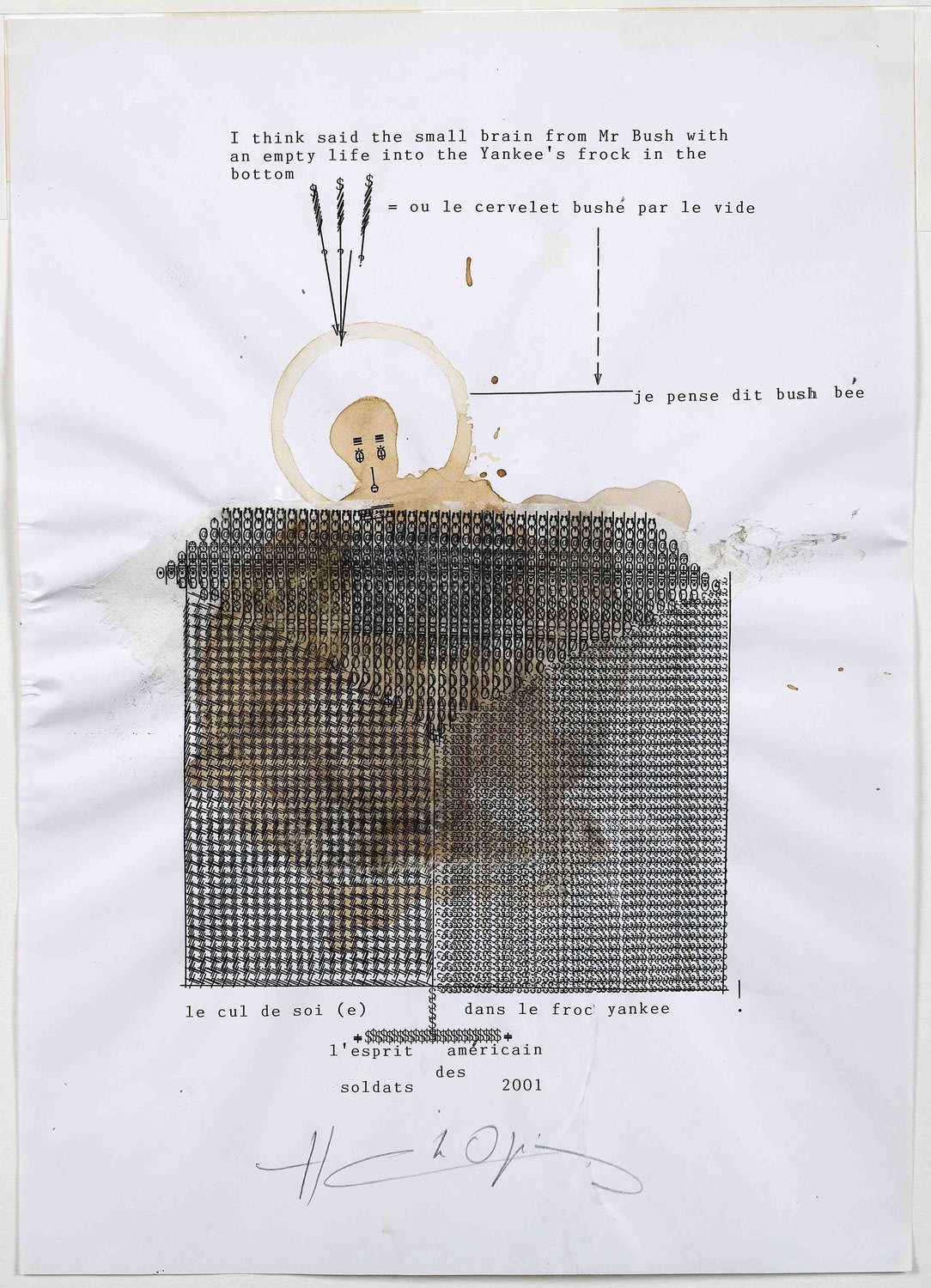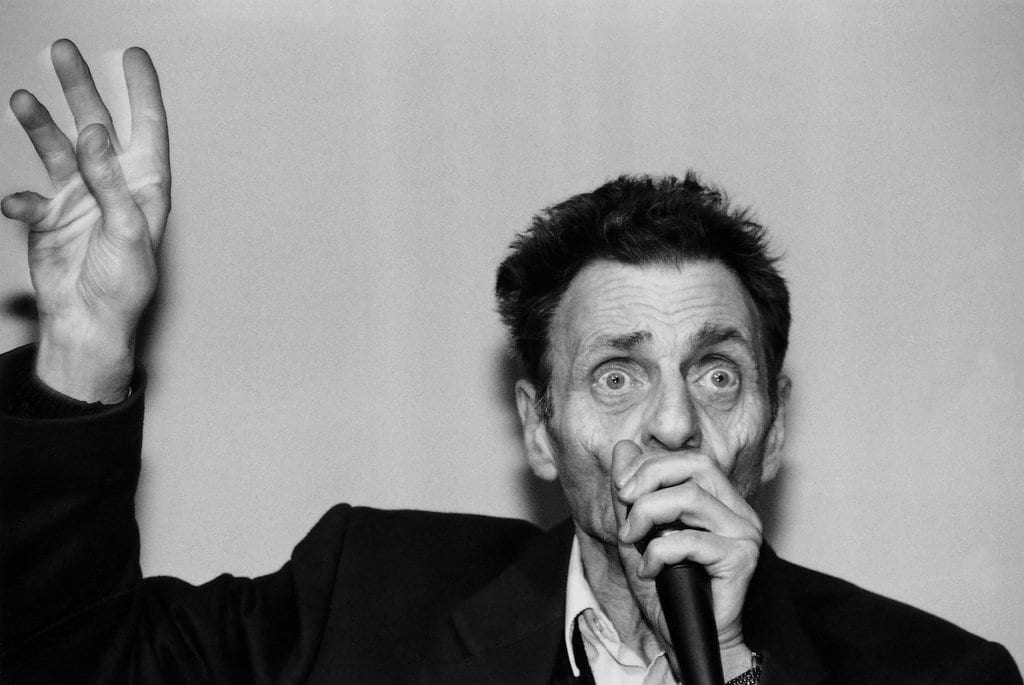Sound poet Henri Chopin’s work asks us to re-imagine the possibilities of the voice. While his work helped to define and expand on a broad field of art known as sound poetry, it is worth drawing a connection to another artist working in a different field, Adolf Wolfsohn who also experimented with the human vocal range. Wolfsohn’s experiences in World War I led him to develop vocal techniques to extend the possibilities for singers and to aid in training the voice. “Chopin worked to elucidate the ways in which the languages we have constructed cannot contain the realities we experience or the desires we wish to express. Language is an attempt to make sense of the eternal chaos of existence, yet it almost invariably fails to do so”
The Wire.
From Henri Chopin’s obituary in the Guardian
Towards the end of the second world war, Henri Chopin, who has died aged 85, escaped from a forced labour camp in Olomouc, in what is now the Czech Republic, after it had been bombed. He then spent time with the advancing Red Army, until, recaptured by the Germans, he and inmates of concentration and extermination camps were sent west on a Nazi “death march”. Thousands died on those journeys and it was then that he listened to the voices of his fellow marchers, sounds which would infuse his work for the rest of his life. In the 1950s Henri created sound poetry, capturing breaths and cries made by his voice and body. He was, said his friend William Burroughs, an “inner space explorer”, but the Frenchman remained a solitary figure, outside any artistic grouping, almost the only exponent of his art, and almost certainly the only poet to record sounds and movements by swallowing a microphone. He then remixed the results in recording studios in France, and, following the route of his performances, in Sweden, Germany and Australia. Taking account of the smallest sounds – like vibrations of his nasal hair – he turned them into the likes of Les Vibrisses, a vast musical and poetic fresco. Henri created more than 100 audio poems, recorded on many discs, including Pêche de Nuit (1957-59), which became the soundtrack of the eponymous film by the Belgian artist Luc Peire in 1962, Vibrespace (1963), Throatpower (1974), Le Corpsbis (1983), Les 9 Saintes Phonies (1984-87) and the oratorio Copernic & Co (2007).
Mes Bronches
“Mes Bronches” draws upon his experience of being teargassed during the upheavals of May 1968. It is a slow, hollow dirge, the sound of deep, troubled coughs slowed beyond recognition. “It’s thanks to the gas that I know how best to show it… EH! Eh!” – The Wire
Throat Power
Chopin uses one microphone at his lips and another down his throat, offers a collage of pulses, gutteralizations, and pounding shreds of sounds that is industrial-like in its harshness and starkness
– allmusic.com
His publication and design of the classic audio-visual magazines Cinquième Saison and OU between 1958 and 1974, each issue containing recordings as well as texts, images, screenprints and multiples, brought together international contemporary writers and artists such as members of Lettrisme and Fluxus, Jiri Kolar, Ian Hamilton Finlay, Tom Phillips, Brion Gysin, William S. Burroughs and many others, as well as bringing the work of survivors from earlier generations such as Raoul Hausmann and Marcel Janco to a fresh audience.
– Wikipedia

